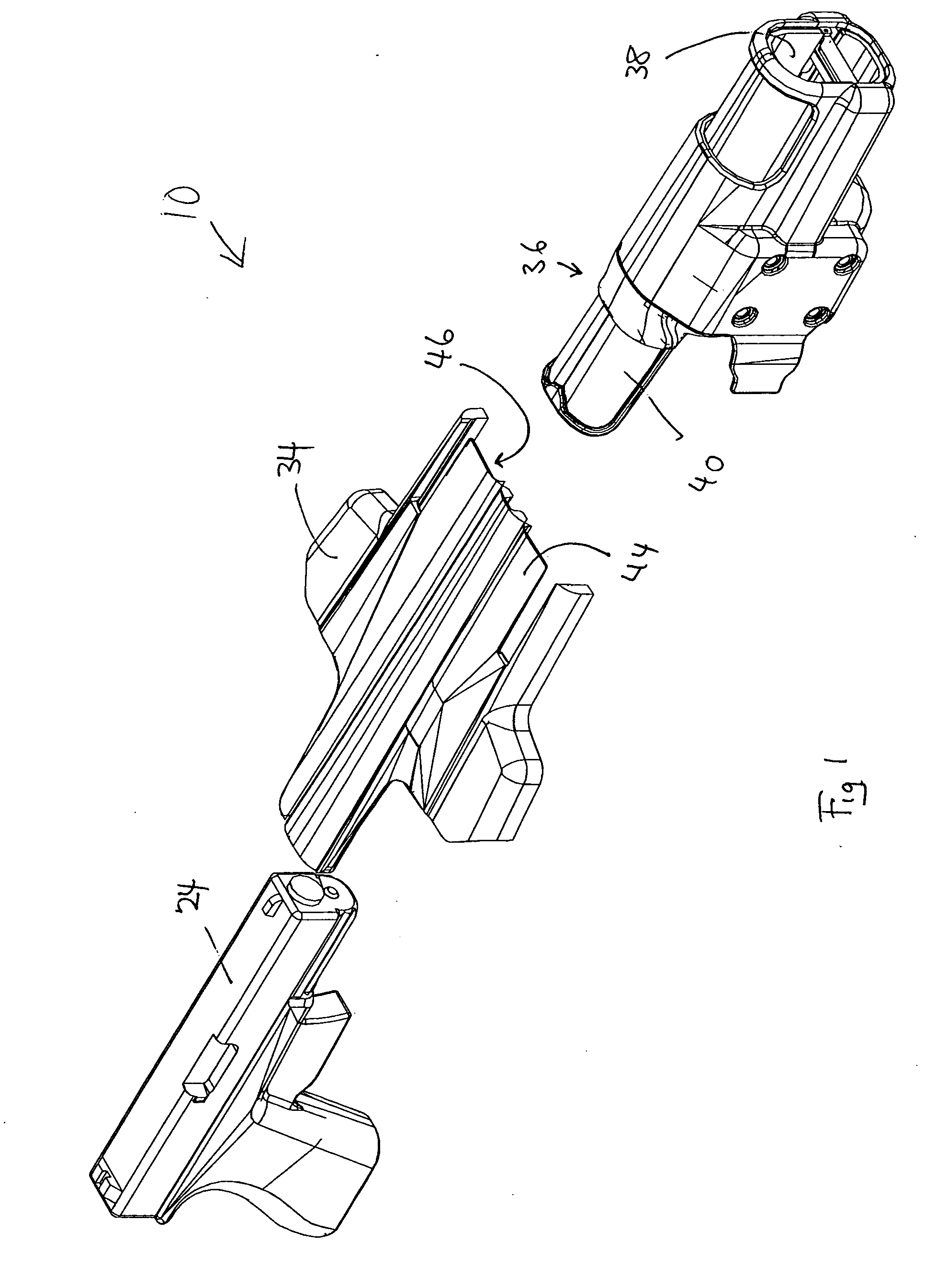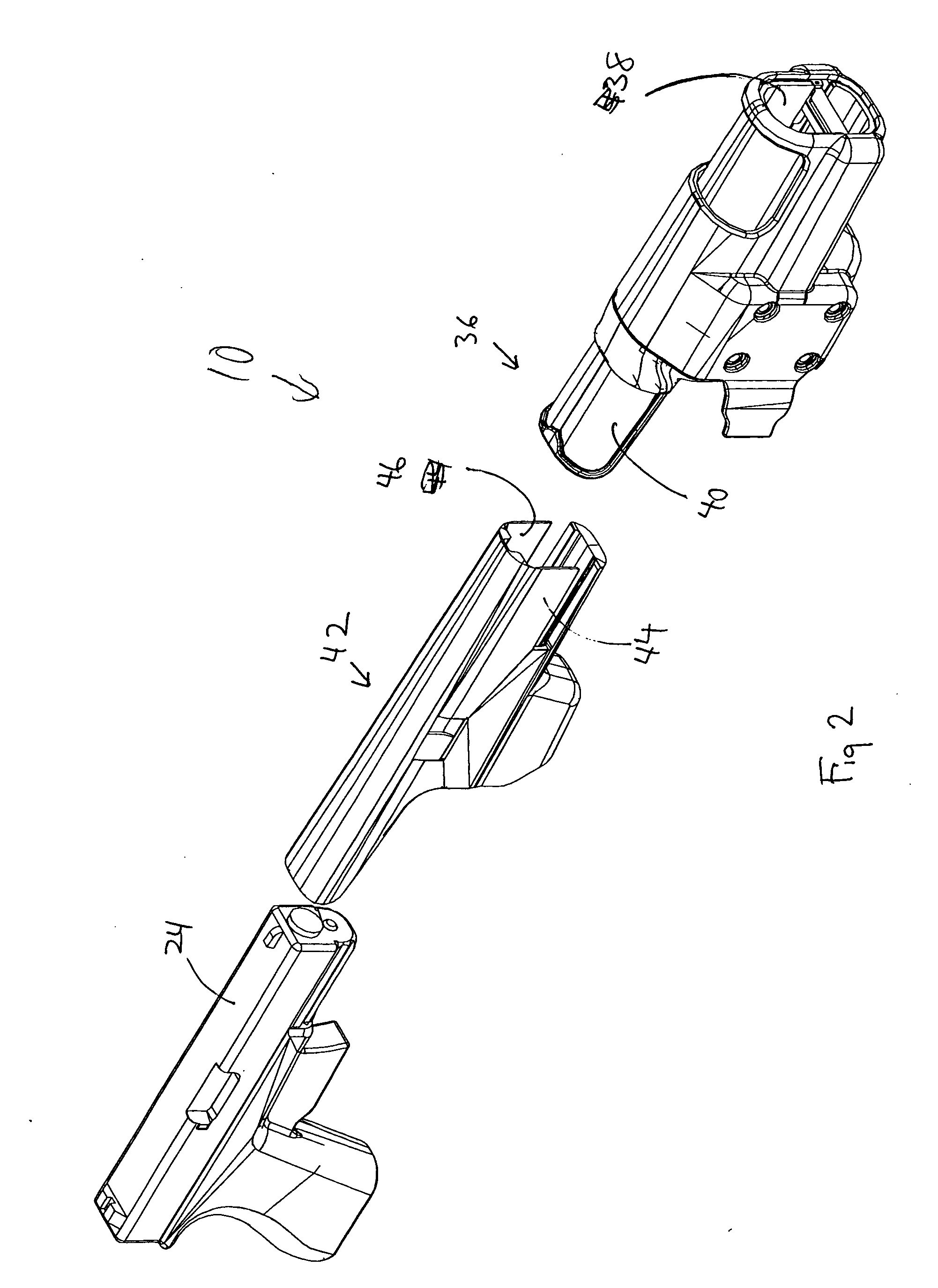Holster manufacturing system and method of making
a manufacturing system and holster technology, applied in the field of plastic handgun holster manufacturing, can solve the problems of high initial mold cost, high cost of plastic handgun molds, and high cost of injection molds for each shap
- Summary
- Abstract
- Description
- Claims
- Application Information
AI Technical Summary
Benefits of technology
Problems solved by technology
Method used
Image
Examples
Embodiment Construction
[0021] While the invention is susceptible of various modifications and alternative constructions, certain illustrated embodiments thereof have been shown in the drawings and will be described below in detail. It should be understood, however, that there is no intention to limit the invention to the specific form disclosed, but, on the contrary, the invention is to cover all modifications, alternative constructions, and equivalents falling within the spirit and scope of the invention as defined in the claims.
[0022]FIGS. 1 through 5 shows several preferred embodiments of the method of manufacturing of the invention. The invention is a method of manufacturing of injected molded plastic handgun holsters which can accommodate a variety of sizes of handguns without making an entirely new injection mold. As shown in FIG. 1, in one version of the invention, the holster 10 can be made of two pieces. An outer shell 36 is of a uniform size and an inner shell 42 is utilized which can be placed...
PUM
| Property | Measurement | Unit |
|---|---|---|
| sizes | aaaaa | aaaaa |
| chemical | aaaaa | aaaaa |
| sonic energy | aaaaa | aaaaa |
Abstract
Description
Claims
Application Information
 Login to View More
Login to View More - R&D
- Intellectual Property
- Life Sciences
- Materials
- Tech Scout
- Unparalleled Data Quality
- Higher Quality Content
- 60% Fewer Hallucinations
Browse by: Latest US Patents, China's latest patents, Technical Efficacy Thesaurus, Application Domain, Technology Topic, Popular Technical Reports.
© 2025 PatSnap. All rights reserved.Legal|Privacy policy|Modern Slavery Act Transparency Statement|Sitemap|About US| Contact US: help@patsnap.com



